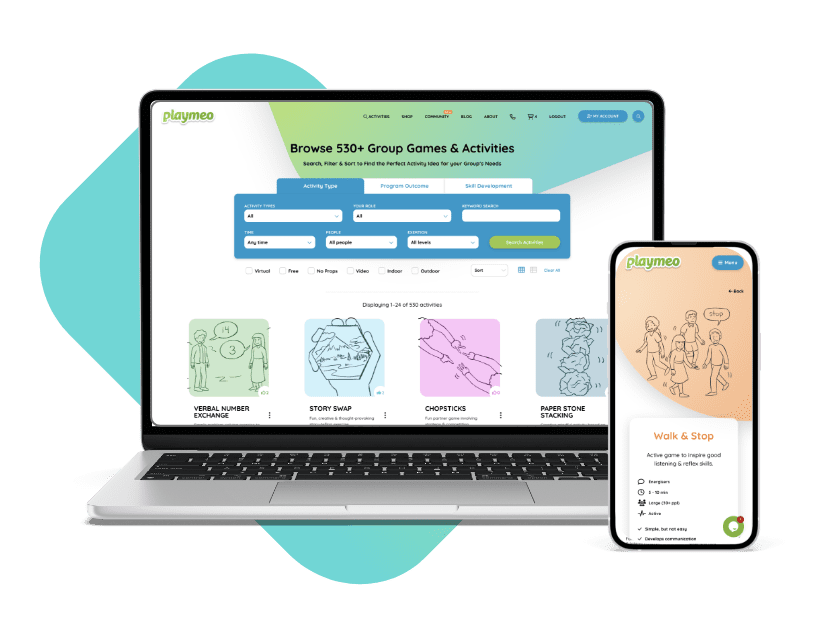Most people think that they know what is an icebreaker, or that simply running a quick activity at the beginning of their program constitutes an ice-breaker.
Or, worse, they think that using ice-breakers is a waste of time, so they dispense with their use altogether.
The premise for each situation could not be further from the truth.
To truly qualify as an ice-breaker, an activity (or any experience) MUST reflect most, but hopefully ALL, of the following five criteria:
- Fun;
- Non-threatening;
- Highly Interactive;
- Simple & Easy To Understand; and
- Success-Oriented.
So, if an activity or experience you are considering does not tick 3, 4 or (hopefully) all 5 of these attributes and you’re still calling it an ‘ice-breaker,’ don’t do it!
I have more to explain, but first, let’s agree on what ice-breakers are aiming to achieve.
What is an IceBreaker?
In short, an ice-breaker aims to break the ‘ice’ that typically limits or inhibits the interactions of a group of people who may or may not know each other very well. Common occurrences of ‘ice’ may include little or no talking, poor eye contact, reluctance to make physical contact, lots of standing around, lack of initiative, absence of trust, etc.
A good ice-breaker acknowledges these facts and intervenes. When presented appropriately, with full regard to the needs of the group, an ice-breaker will reduce, minimise (and hopefully eliminate) the impact of the ‘ice’ and invite the group to create a more productive atmosphere, one that is conducive to working together or achieving whatever the purpose of the group is.
In essence, an ice-breaker PREPARES the group for its purpose. Without this necessary prep, the group is less likely to be as ‘successful’ as it could.
So, this brings us back to our original question – what is an icebreaker? Or, more simply, what makes an ice-breaker an ice-breaker? It is very clear that just adding an activity or game at the start of a session does not constitute an ice-breaker.
An Illustration
How often have you sat in a room at the start of a class or training session, and at the behest of the leader/teacher/instructor, waited in turn as everyone stood up and introduced themselves? O.M.G. Heaps of times, I bet. And I would also wager that the ‘leader’ would have labelled this exercise as their nominated ‘ice-breaker.’ Wrong! So wrong.
While relatively simple to understand, this poor excuse for preparation is rarely fun, it is never success-oriented (most people are thinking of what they are going to say, and not listening to anyone else), it is very threatening (especially to those who are not prepared to speak in front of others) and is about as far from highly interactive as you can get. It’s not an ice-breaker – it’s simply an indication that the presenter doesn’t know what else to do to kick off their session effectively.
Do you see what I mean?
An ice-breaker is ONLY ever an ice-breaker when it truly breaks the ice. And this result can only ever be achieved when the exercise (or experience) invites tons of simple, non-threatening, success-oriented, interactive fun.
For example, using a fun, interactive name-game to help a new group of people get to know one another, showing a PowerPoint presentation to frame a forthcoming experience, and smiling and shaking the hand of every participant as they enter your training room, are all wonderful ways to break the ice.
Generally speaking, if the activity/exercise/experience successfully prepares your group for what is ahead, then it is more likely to be considered an effective ice-breaker.
playmeo is jam-packed with great examples of ice-breakers that tick all the boxes.
A Final Word
Now, keep in mind that my discussion here does NOT suggest that an ice-breaker has to be a game or activity.
My focus here is solely on producing a particular result. ANY experience, including games and activities, but also simple conversations, introductions, etc, can achieve this result.
So, when you think ‘ice-breaker,’ think of what ‘experience’ you could introduce that would effectively break the ice. One of the tools at your disposal is a quick game or exercise, but you could equally introduce another form of preparation to achieve your desired result.
I just happen to believe that ice-breakers which come in the form of games and activities are particularly useful because they are engaging, fun and very transferable. And that’s why playmeo shares dozens of these types of experiences for you try.
What To Do Next
Do you feel that you have a better grasp of what is an icebreaker?
When you’re ready, take a look at dozens of simple and fun ice-breakers which meet these five key characteristics.
Or, become a member to access 530+ activities that are featured in our activity database.
Join Today






